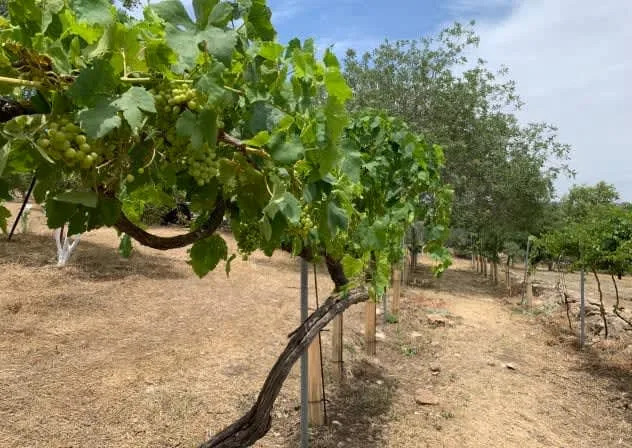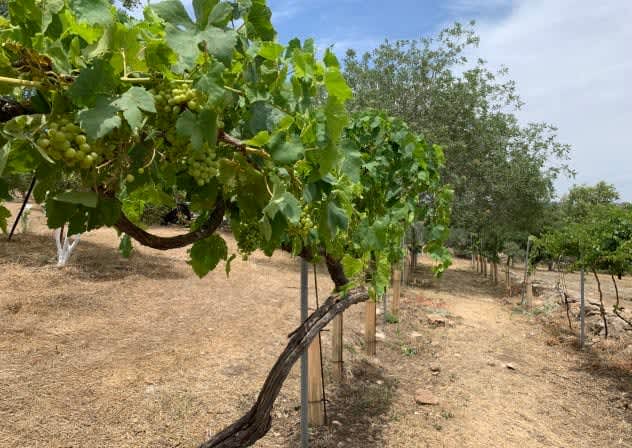
A Ramat HaNadiv vineyard that uses traditional cultivation methods. (photo credit: Dr. Shulamit Miller)
According to a new study, the sages “sought ways to allow Jewish farmers to remain part of the wine industry without compromising Halacha.”
A new study from the University of Haifa reveals that Jewish sages in Late Antiquity were not detached from the land but were actively involved in the robust wine culture of the Roman-Byzantine world.
Published in the Journal of Interdisciplinary History, the research shows that rabbinic rulings on viticulture were deeply informed by practical agricultural knowledge and aligned with wider Mediterranean traditions.
“The sages’ rulings were not detached from the realities in which they lived. On the contrary, they reflect an intimate familiarity with agricultural work,” explained Dr. Shulamit Miller of the University’s Haifa Center for Mediterranean History, a co-author of the study.
“The sages fully understood the economic systems in which they operated and sought ways to allow Jewish farmers to remain part of the wine industry without compromising Halacha.”
During the third and fourth centuries CE, wine production was a major economic driver in the Land of Israel, and a key component of local and regional commerce.

Karas wine, a popular wine brand from Armenia. (credit: Holy Land Trade Group)
The new study, conducted by Dr. Miller alongside Professors Gil Gambash, Guy Bar-Oz, and Eyal Ben-Eliyahu, sought to understand how vine cultivation in ancient Israel compared to other regions, whether sages were personally involved in viticulture, and how they shaped Jewish law to reflect agricultural reality.
The researchers used an interdisciplinary approach, combining textual analysis of rabbinic literature like the Mishnah, Tosefta, and Jerusalem Talmud with archaeological evidence and Classical Greek and Latin agricultural treatises. This integration of evidence demonstrated the sages’ deep familiarity with vineyard planning and growing techniques.
A key finding of the study is that the distances mandated by the sages between vine rows to prevent crossbreeding (kilayim) are “nearly identical” to those found in classical vineyards in Italy and France.
Merging the theological with the environmental
This suggests a practical and adaptable halachic worldview that merged theological principles with a sophisticated understanding of environmental, social, and economic factors.
The study also found that the halachic prohibition on libation wine took effect only at the grape-pressing stage, which allowed vineyard owners to employ non-Jews or non-observant Jews during the early stages of vineyard work.
The study concludes that the sages were not merely theoretical legalists but “pragmatic experts deeply embedded in the agricultural practices of their time.” Their rulings reflect a conscious effort to harmonize divine law with the economic and environmental realities of their communities, positioning them as active participants in the economic systems of Late Antiquity.
“Our research emphasizes Halacha as a dynamic, flexible force—one that operates within real-life circumstances, not just above them,” the researchers said.


Dining and Cooking